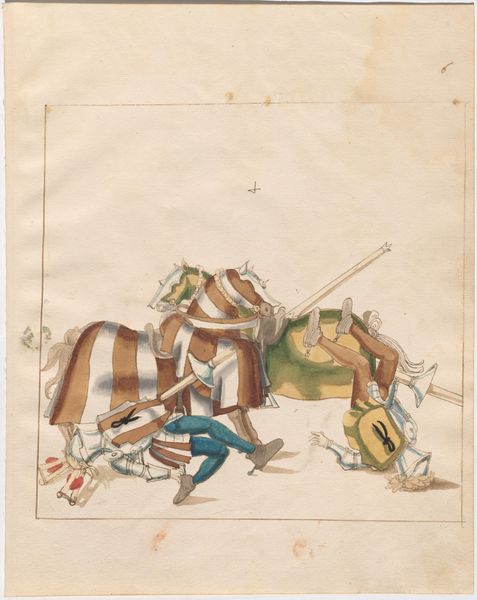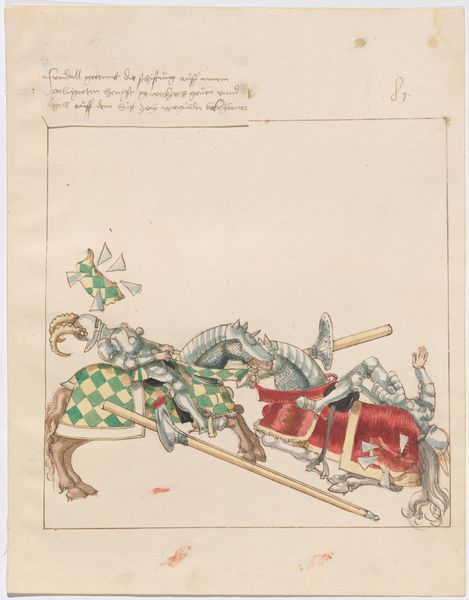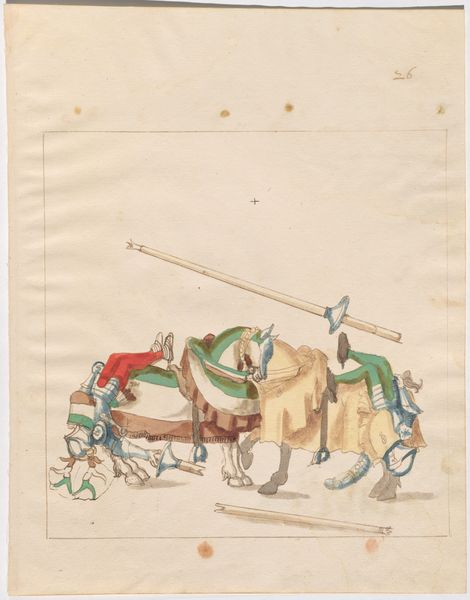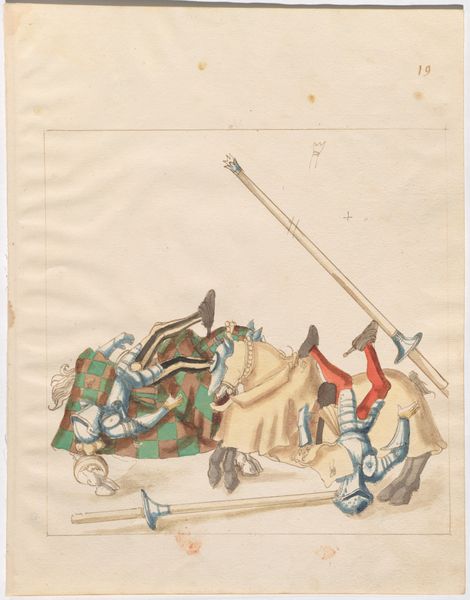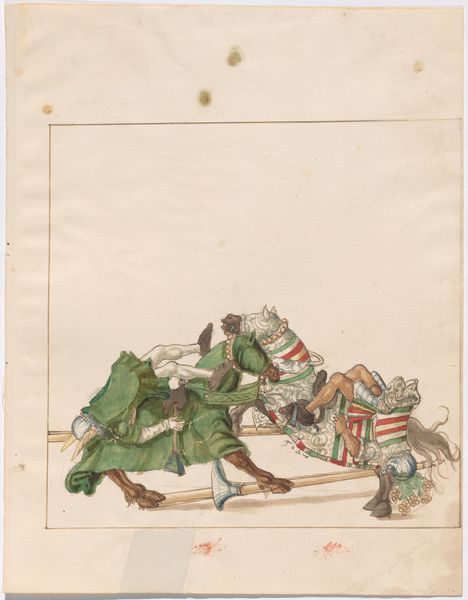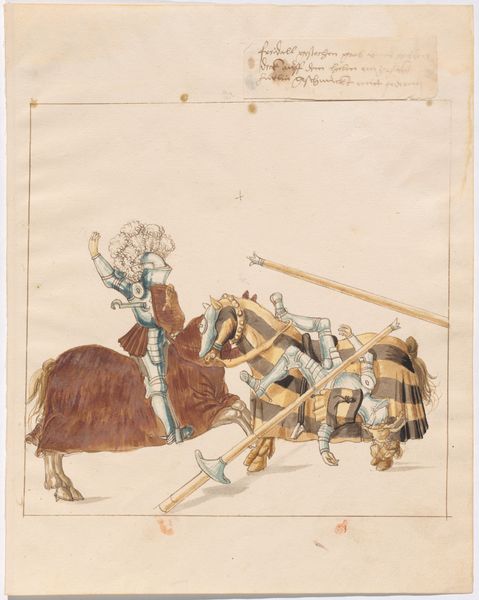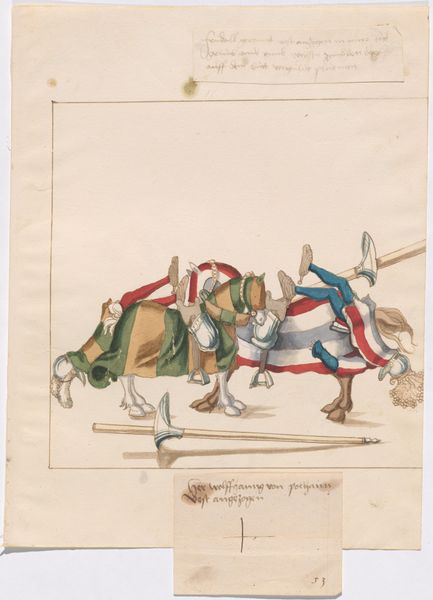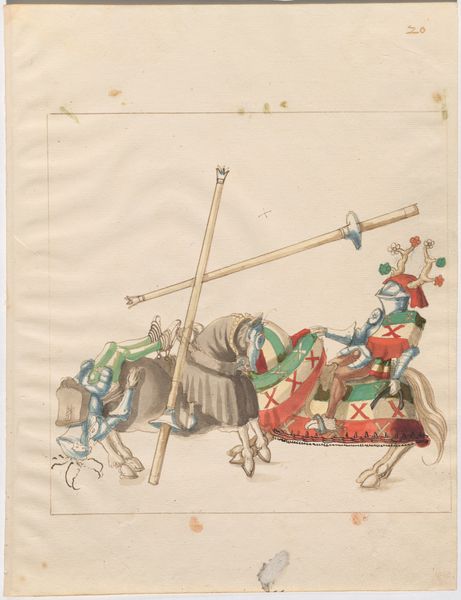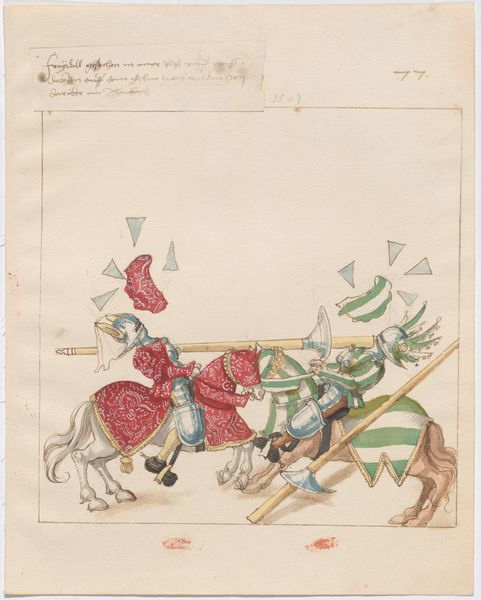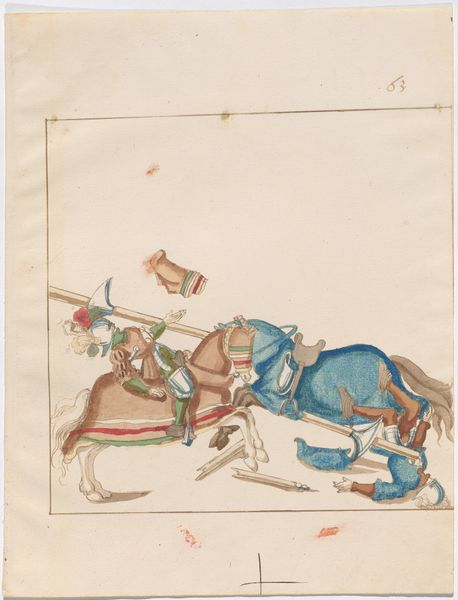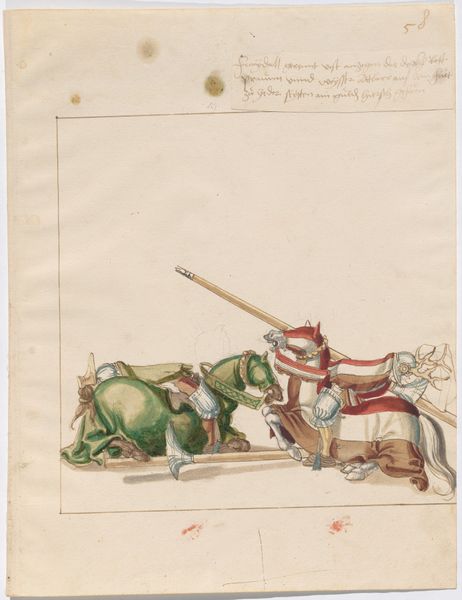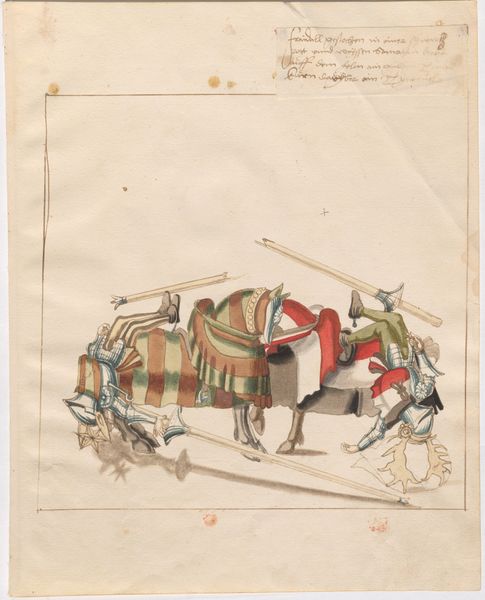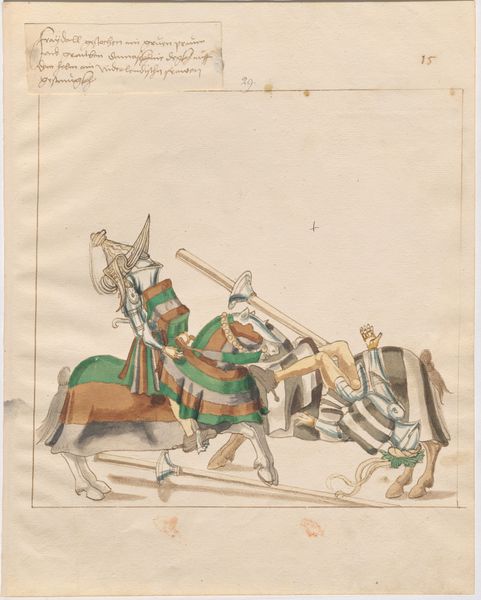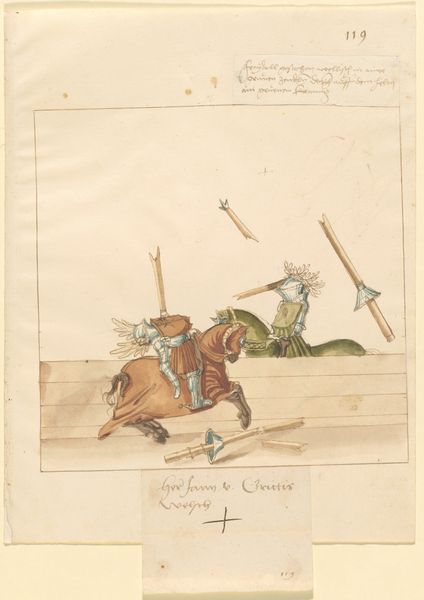
drawing, watercolor
#
drawing
#
figuration
#
11_renaissance
#
watercolor
#
watercolour illustration
#
genre-painting
#
history-painting
#
watercolor
Dimensions: sheet: 33 × 26.3 cm (13 × 10 3/8 in.)
Copyright: National Gallery of Art: CC0 1.0
Curator: Immediately, I'm struck by the chaotic energy in this rather small-scale watercolor illustration. Editor: Indeed! This intriguing drawing, entitled "German Joust of Peace," dates from around 1512 to 1515. While its creator remains anonymous, its depiction of a jousting match provides valuable insights into the era's social rituals and the performative aspects of power. Curator: A "Joust of Peace," you say? Given the tangled mess of horses, lances, and fallen knights, it feels anything but peaceful! There’s almost a comic quality to the scene, defying the presumed formality of such an event. Editor: Well, that's the irony, isn't it? Jousts were heavily codified events, and even when intended to be “of peace,” the potential for real harm was ever-present. This image captures that tension between spectacle and potential violence inherent in these events. The watercolor medium itself seems to emphasize the fragile, almost fleeting nature of chivalry, doesn't it? Curator: Precisely! And look at the horses—they’re as much characters in this drama as the knights themselves. There is an abundance of symbolism here, if you look closer. I'm seeing that their decorative cloths suggest particular lineage. One seems to be green, alluding to new growth, springtime, rebirth. The cream or tan coloring is about peace, but as you said, what lies beneath the surface. Editor: You’re right, their appearance carries symbolic weight. One wonders about the social dynamics at play: Was this joust meant to solidify an alliance? Was it about prestige and display of wealth? These competitions served a public function; they visually reinforced existing social hierarchies. Curator: I imagine a bustling audience, too—an aristocracy keen to witness and be reminded of their own status, contrasted to those unarmored and on foot! The fallen knight serves as a potent symbol of risk and consequence but also the ever-present potential for social mobility. Editor: Absolutely. This image really encapsulates the precarious position that nobility can occupy. Despite its imperfections, this watercolor and ink work on paper is rich with cultural and historical resonance. Curator: I agree, examining this image today brings into view a range of medieval social complexities and customs. Editor: And even though it is "anonymous" it opens so many areas to discover more.
Comments
No comments
Be the first to comment and join the conversation on the ultimate creative platform.
